If you’re a cat owner, you’ve likely found yourself buried in a never-ending flurry of fur. From your couch to your clothes, cat hair seems to follow you everywhere. But why do cats shed so much, and when should you worry? The truth is, shedding is a natural process for cats, but excessive hair loss can signal underlying issues. This article cuts through the fluff to deliver actionable insights into the root causes of excessive shedding and proven strategies to manage it. Whether your cat is a seasonal shedder or dealing with health-related hair loss, we’ve got science-backed solutions to keep their coat healthy and your home fur-free.
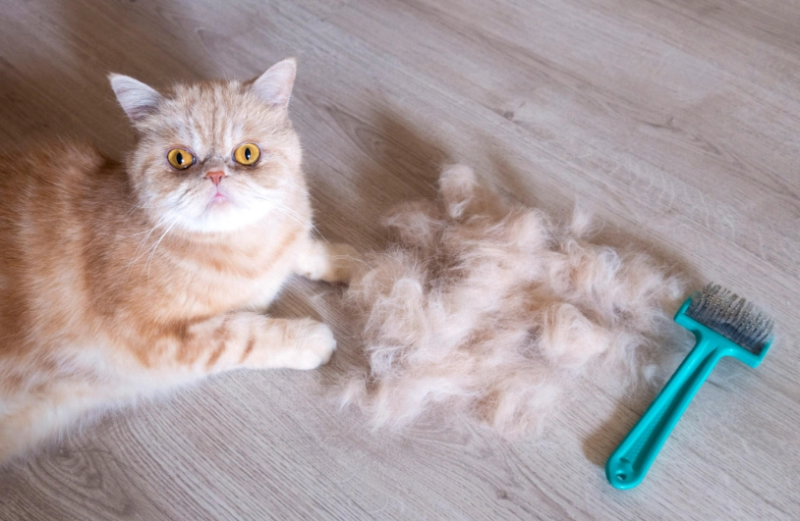
Why Do Cats Shed? The Science Behind Hair Loss
Cats shed to remove dead hair and regulate body temperature. While all cats shed, the amount varies based on breed, age, and health. However, when shedding becomes excessive, it’s often a red flag. Let’s break down the primary causes:
1. Seasonal Shedding: Nature’s Thermostat
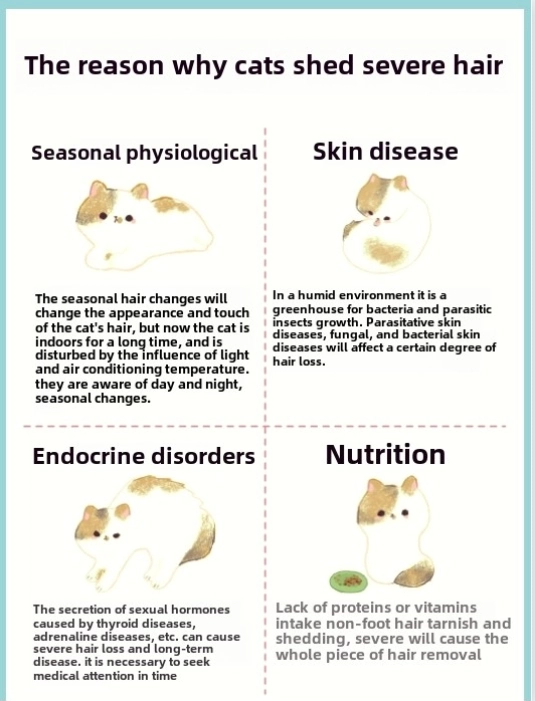
Cats instinctively adapt to temperature changes by shedding. In spring, they shed thick winter coats for lighter summer fur. Conversely, fall triggers growth of denser fur for winter insulation.
What to Do:
Brush Regularly: Daily brushing removes loose fur and reduces hairballs. Use a deshedding tool during peak seasons.
Control Indoor Climate: Maintain stable temperatures to minimize extreme shedding cycles.
2. Nutritional Deficiencies: The Hidden Culprit
A poor diet directly impacts coat health. Cats require high-quality protein, omega fatty acids, and vitamins (A, E, B-complex) to maintain strong follicles.
Key Nutrients:
Protein: Insufficient protein weakens hair structure, leading to breakage. Aim for diets with at least 30% animal-based protein.
Omega-3 and Omega-6: Found in fish oil and eggs, these reduce inflammation and boost shine.
Zinc and Biotin: Deficiencies cause dry, flaky skin and excessive shedding.
Fix It:
Switch to premium cat food with “complete and balanced” AAFCO certification.
Add supplements like fish oil or vet-approved multivitamins.
3. Skin Conditions and Parasites
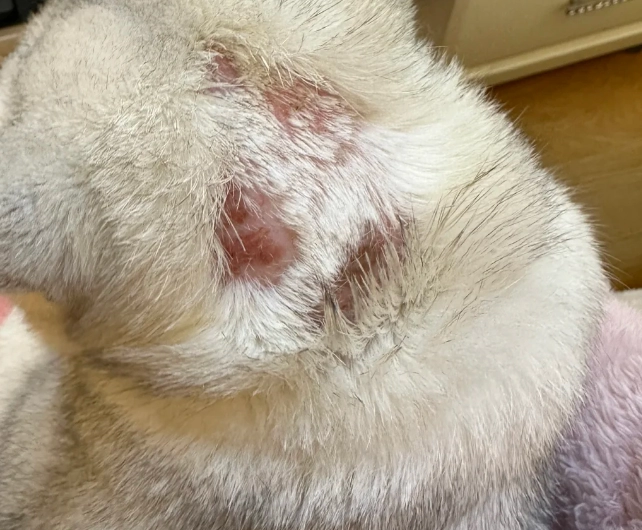
Skin issues are a top cause of abnormal shedding. Fungal infections (ringworm), mites, fleas, and allergies trigger itching, prompting cats to over-groom and pull out hair.
Warning Signs:
Bald patches, redness, scabs, or dandruff.
Constant scratching or licking specific areas.
Action Steps:
Treat Infections: Antifungal shampoos or oral medications prescribed by a vet.
Prevent Parasites: Monthly flea/tick preventatives and routine deworming.
4. Stress and Anxiety: The Silent Shedder
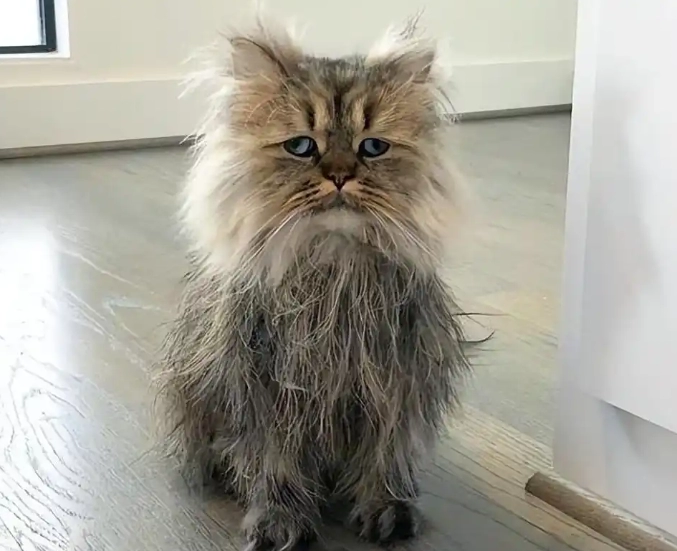
Cats are sensitive to environmental changes. Stressors like moving, new pets, or loud noises can cause “psychogenic alopecia,” where cats compulsively lick themselves bald.
Stress Triggers:
Changes in routine or household dynamics.
Lack of mental stimulation or safe spaces.
Solutions:
Create Safe Zones: Provide elevated perches or quiet rooms.
Use Pheromone Diffusers: Products like Feliway mimic calming cat hormones.
Interactive Play: Dedicate 15–20 minutes daily to reduce anxiety.
5. Medical Conditions: When Shedding Signals Danger
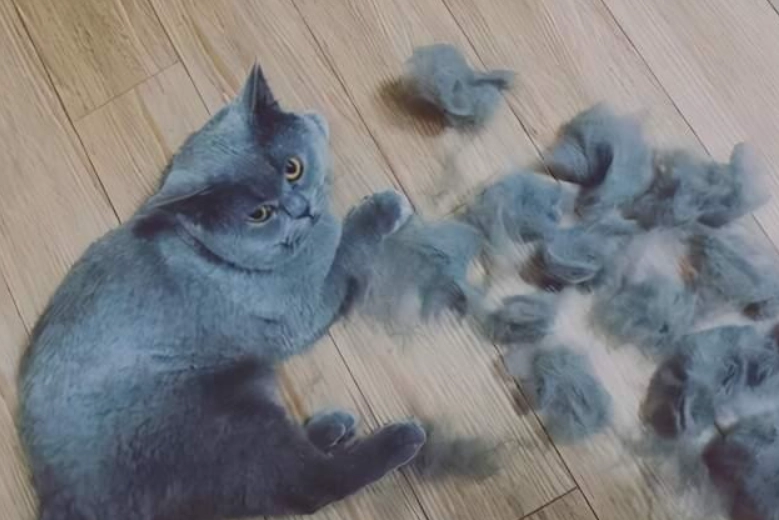
Underlying health problems often manifest through coat changes. Hormonal imbalances (hyperthyroidism, Cushing’s disease), kidney issues, or autoimmune disorders disrupt hair growth cycles.
Red Flags:
Symmetrical hair loss (e.g., both hind legs).
Weight loss, lethargy, or changes in appetite.
Response:
Vet Visit: Blood tests and skin biopsies can diagnose conditions.
Tailored Treatments: Hormone therapy or dietary adjustments per vet guidance.
6. Grooming Mistakes You’re Probably Making
Improper care worsens shedding. Overbathing strips natural oils, while human shampoos irritate skin.
Best Practices:
Bathe Sparingly: Every 2–3 months using cat-specific shampoo.
Brush Correctly: Use a stainless-steel comb for long-haired breeds; rubber brushes for short hair.
Avoid Shaving: Shaving disrupts temperature regulation and can damage follicles.
Proactive Strategies to Reduce Shedding
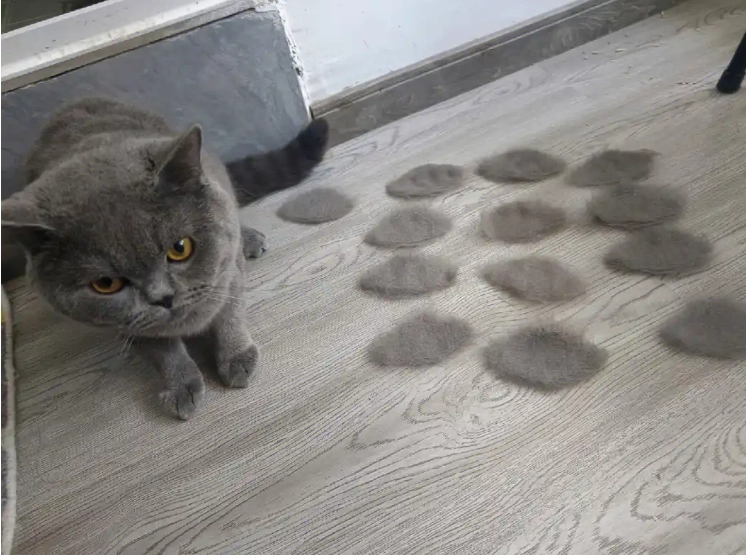
Diet Overhaul: Prioritize high-protein, grain-free diets with added probiotics for gut health.
Hydration Boost: Dehydration dries out skin. Provide fresh water and wet food.
UV Exposure: Safe sunbathing (via window screens) stimulates vitamin D production for healthier coats.
Air Purifiers: Reduce airborne allergens that irritate skin.
Final Tips for Fur-Free Living
Lint Rollers Everywhere: Keep them in your car, office, and entryway.
Wash Bedding Weekly: Use hypoallergenic detergent to remove embedded fur.
Invest in a Robot Vacuum: Schedule daily cleanings to tackle stray hairs.
By understanding the why behind shedding, you can take targeted steps to keep your cat’s coat lush and minimize cleanup. Remember: Consistency is key—whether it’s diet, grooming, or stress management, small daily efforts yield long-term results.



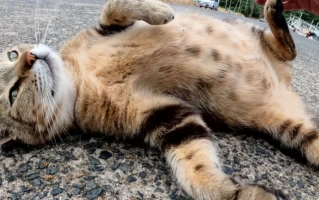

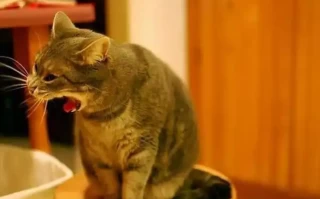


No comments yet, come on and post~